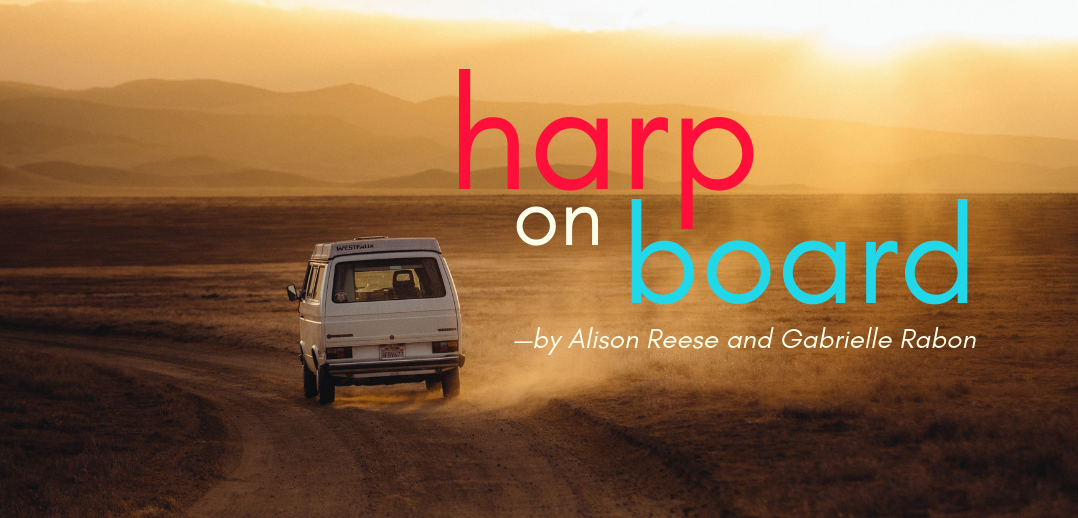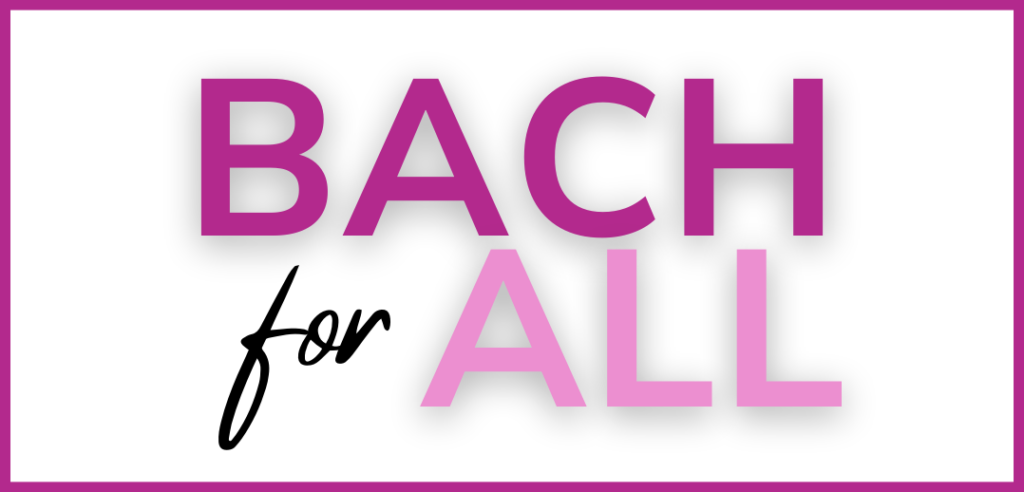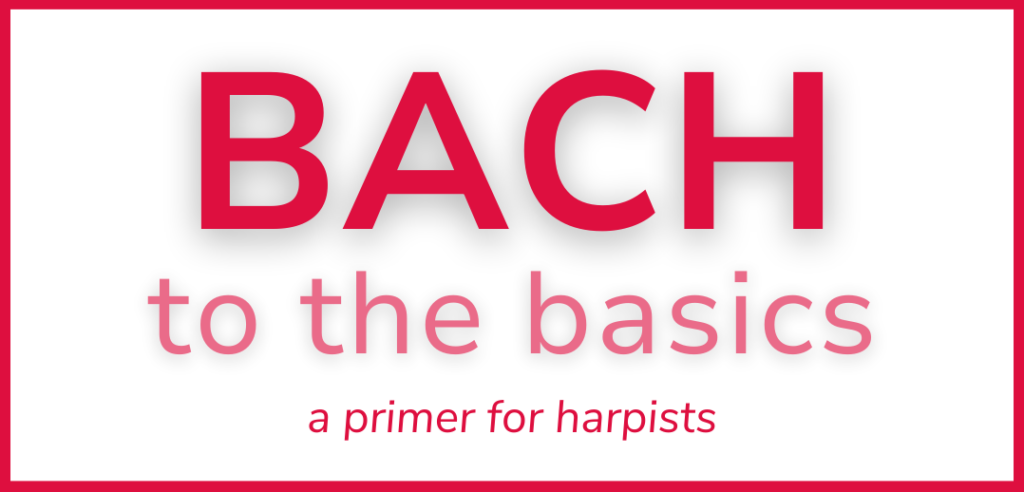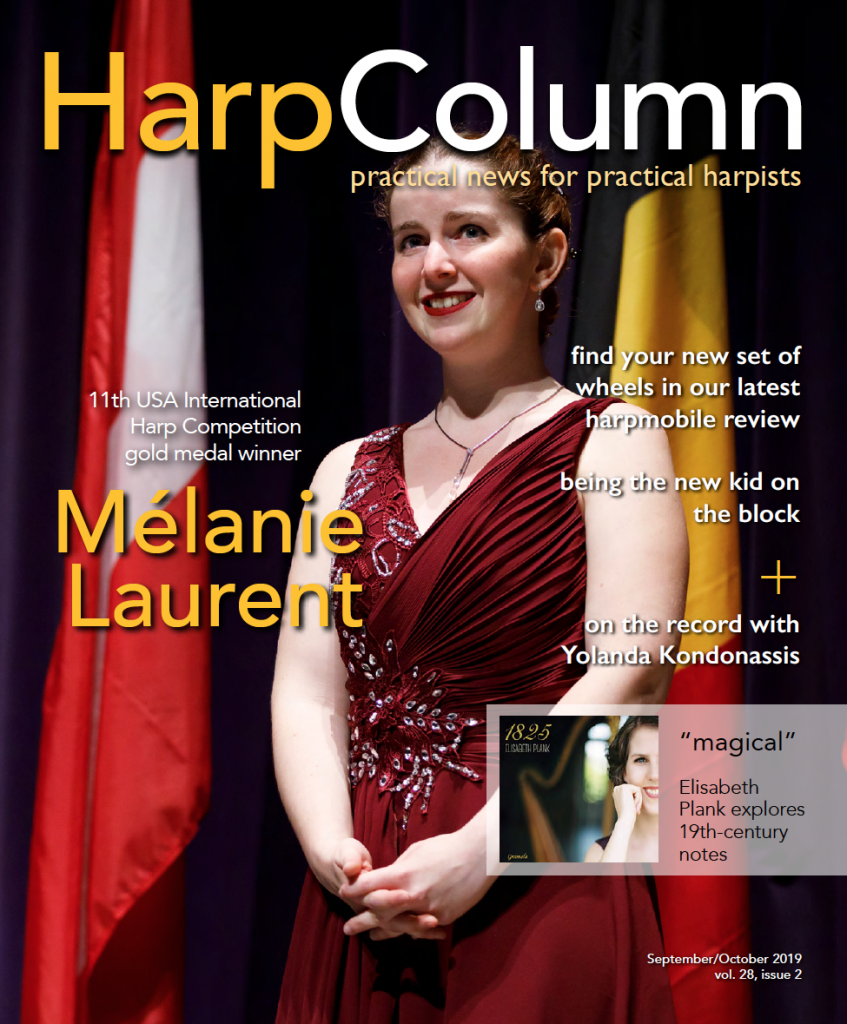For more about how we conduct our semi-regular harpmobile reviews, be sure to check out the article extra Behind the Harpmobile Reivew.

Harpists are highly selective about their instruments—no secret there. But our cars? We are almost as choosy about our rides as we are about our harps. You won’t hear a couple of oboists dissecting the differences between cargo areas in SUVs versus minivans, but harpists can get pretty passionate about their beloved harpmobiles.
Harp Column’s harpmobile review has been a favorite among our readers since we first looked at 10 harp-toting vehicles back in our very first issue in 1993. Harpmobiles have come a long way since then. Gone are the days of removing huge, heavy back seats to fit the harp in the back of a minivan. Car makers keep cranking out harp-friendly models full of handy options like backup cameras and automatic lift gates that seemed Jetsons-like back in 1993. Harpmobile choices abound today—in size, cost, and luxury. Seats fold down flatter than ever, fuel mileage is up higher than ever. Station wagons are dwindling, crossovers are exploding. Seating configuration options allow harpists to carry two passengers with their harp in more vehicles than ever.
We did the heavy lifting for you. We lugged a concert grand pedal harp around to a dozen car dealerships and loaded it into every vehicle that was even remotely close to being big enough to hold a harp.
But the abundance of choices can be enough to make your head spin. Short of lugging your harp to a dozen car dealerships to load your harp in a bunch of vehicles, how is a harpist to know which cars are best? Well, we did the heavy lifting for you. We lugged a concert grand pedal harp around to a dozen car dealerships and loaded it into every vehicle that was even remotely close to being big enough to hold a harp. We rate each vehicle that we successfully load a harp into for harpability and McFactor (we’ll explain those later). We take measurements, move the back seats up and down, check out the front seats, answer questions from confused onlookers, and snap a few pictures with car salesmen so they can show their buddies who won’t believe their story about the harpists who stopped in their dealership that day.
About our rating scale
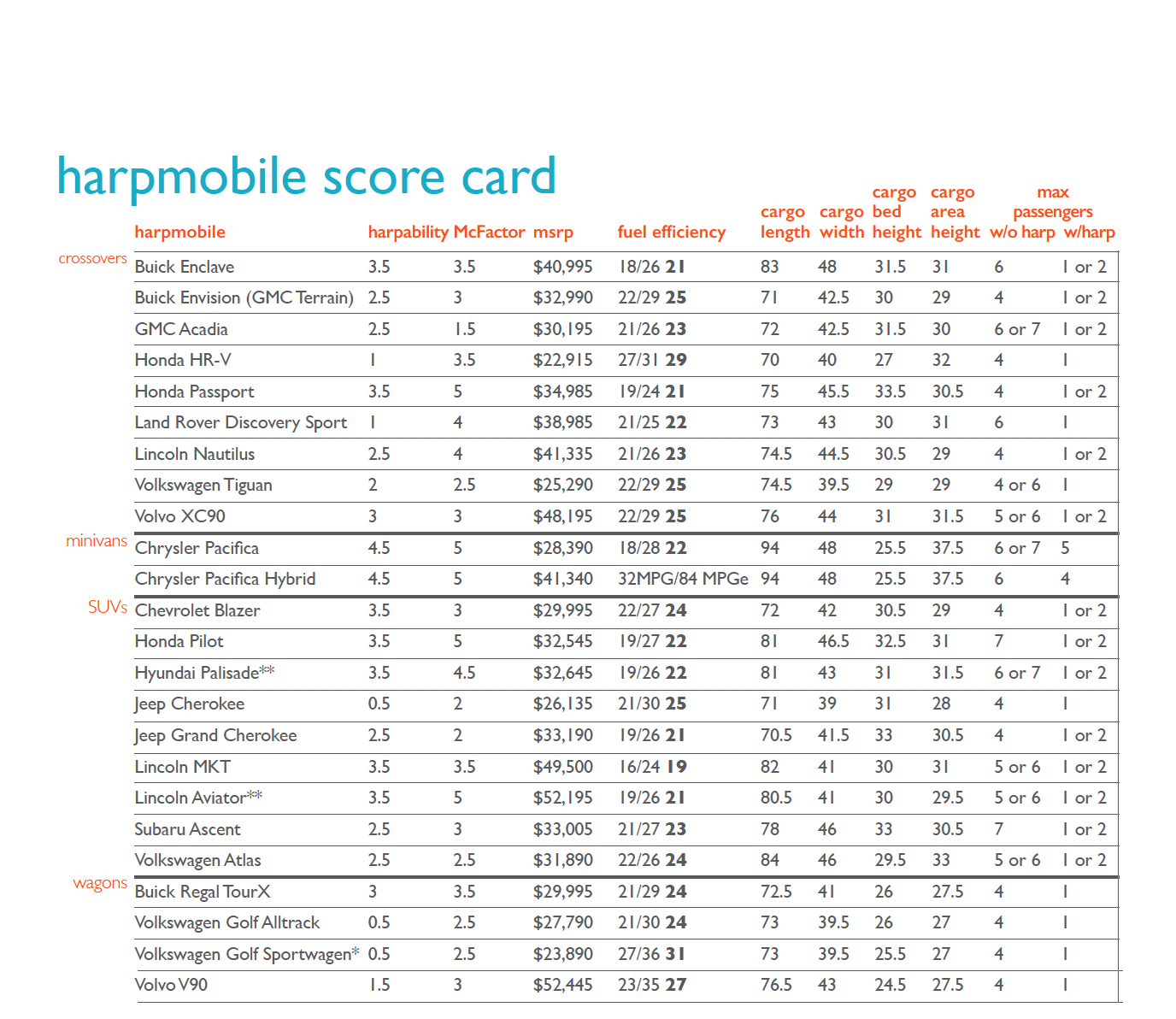
We understand that harpists refer to our harpmobile reviews long after we publish them, so we try to keep our rating system consistent across all of our reviews to keep comparisons as close to apples-to-apples as possible (see harpmobile score card below). Our scales for rating harpability and McFactor range from zero to five, which has been consistent back to our 2006 review. The only perfect score this year was given to the Chrysler Pacifica minivan in McFactor. To date, no vehicle has received a perfect harpability score. Hey, Detroit, there’s a goal for you—you might have a top IIHS safety rating, but can you get a top Harp Column harpability rating?
Harpability
If you are new to our harpmobile review, you might be wondering what our harpability rating is all about. Basically it’s a term we made up to describe how easily a concert grand harp fits in a vehicle. We test for ease of loading, number of loading options (flat, column, propped), and spaciousness for harp and gear (you’ve gotta fit your harp cart in there somewhere).

Let’s talk about loading options for a minute. Flat loading is the most common way to load a harp. You lay the harp down flat on the tuning pin side and slide it into the back of a flat cargo bed. Column loading is not as common as flat loading, as it’s only possible in minivans and occasionally a massively tall SUV. You tip the harp forward, loading it crown first, and slide it into the vehicle on its column. The harp can rest between two captain’s chairs, or be held up by securing it to the side of the vehicle with bungee cords. Propped loading is a new term we’re coining for this review. It’s a sort of hybrid of flat and column loading that allows you to carry one additional passenger in the back seat. You load the harp in flat, then put one of the second row seats up, propping up the knee block of the harp on the top or side of the raised back seat (see photo). It’s not ideal, and probably wouldn’t be a comfortable ride for the back seat passenger to have a harp right next to their left cheek, but if you need to haul an extra passenger, it’s an option to consider.
To receive a harpability rating higher than a three, a vehicle must accommodate more than one type of loading. In previous harpmobile reviews, the top harpability ratings have gone to minivans because they offer the most loading options. This year is no different. But keep in mind that a vehicle with an average harpability score might still be a harpmobile, it just might only offer one loading option, thus limiting its maximum possible score.
Another thing to consider when reading our reviews is that we tested them without the benefit of pillows, hard plastic floor coverings, or cushions harpists use to customize their loading process. A well-placed pillow can alleviate many small inconveniences we encountered loading into these vehicles. We also had our own personal biases that crept in, despite our best attempts to be as impartial as possible. Two female harpists tested all of the vehicles. One harpist did all of the loading to get a consistent evaluation of the harpability, and the other harpist assisted when necessary. Both harpists evaluated the process and the McFactor. The harpists are both of average female height and strength. Lower vehicles tended to work better for our testers, but taller harpists might have felt differently.
McFactor
While some people might be more interested in a car’s towing capacity or horsepower, we want to know how much space there is in the front seat to hold our burger and fries as we scarf down dinner on the way to our gig. Shockingly, none of the mainstream automobile reviews address this critical criteria (nor do they look at harpability). So we made up the McFactor to rate a harpmobile’s ability to comfortably hold a harpist’s pre-concert chow. After all, who wants to risk spilling ketchup on their concert black threads?
What we didn’t do
But wait, there’s more…
Looking for a car not listed here? Chances are we reviewed it in a previous issue. Check out our November-December 2004, 2006, and 2008 and September-October 2014 issues.
You might be thinking that you see a lot more harpmobiles on the road than are reviewed here. We only look at vehicles that we have not reviewed before. You can check our previous reviews for our thoughts on older harpmobiles (see links at right). We will review a vehicle again if it has received a significant interior redesign that could affect its harpability. We also did not review any vehicles with an MSRP over $50,000. There are several luxury SUVs on the market with price tags north of $50K, and while they obviously fit a harp, their price tag puts them out of reach for most harpists. We made two exceptions for this $50K cap: the Lincoln Aviator (see our review for a full explanation), and the Volvo V90 because wagons are so hard to come by. Finally, we only reviewed vehicles available in the United States. There are plenty of fabulous harpmobiles available around the world, but our review only looks at the U.S. market.
CROSSOVERS
Buick Envision (GMC Terrain)
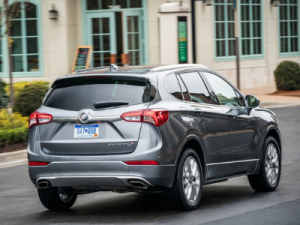
Buick’s lineup of crossovers features three sizes, with the Envision falling in the middle. The harp fits in the Envision, but it’s tight. We had to move the driver’s seat forward, but not uncomfortably so. The bed is a little narrow and the harp hangs over the edge of the seats. Still, we only had to tilt the harp slightly to load it, and the cargo bed lies pretty flat. The Envision includes cargo area seat release levers that automatically fold down the back seats. Its McFactor is relatively high. Despite only having two cup holders, the Envision has a nice center console and plenty of storage. The Envision has a twin in the GMC lineup—the Terrain—which shares the same interior design.
Overall: This car is a bit of a tight fit, but not entirely uncomfortable. Still, it likely wouldn’t work for long or frequent rides with the harp. Note its similarity to the GMC Terrain.
Buick Enclave

The papa bear in the Buick crossover lineup, the Enclave is a spacious harpmobile. It’s long enough to have a few inches of extra space and wide enough to slide the harp in easily. Still, a gap behind the second row seats creates some trouble when loading. The McFactor is pretty nice, with four cup holders and a space under the console large enough to hold a purse or small bag.
Overall: There is no shortage of space for the harp or your gear in the Enclave, and the McFactor is above average.
GMC Acadia
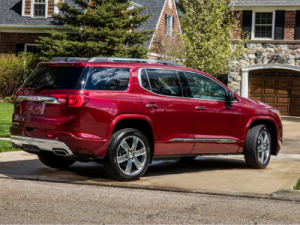
Continuing with the Goldilocks and the Three Bears analogy, the harp fit in the GMC Acadia is kind of like Baby Bear’s porridge—just right. It’s not too tight and not overly large. The second row has options for either captain’s chairs or a bench seat. There is a bit of a space behind the second row that could make loading difficult. The McFactor is pretty standard, though it only has two cup holders.
Overall: This three-row harpmobile offers a standard harp fit with a slightly below average McFactor.
Honda HR-V

Initially, we were concerned that the Honda HR-V wouldn’t fit a full-size harp, but this little crossover proved us wrong. The harp could not fit more snugly when laid flat with both of the front seats moved forward uncomfortably far, but it fits nonetheless. The harp’s knee block presses against the center console, which cannot be moved; propping it up with pillows so that it lies above the console might help. We also suggest attempting to column load the harp diagonally for a less cramped ride. On the bright side, the HR-V has a flap covering the gap behind the seats so that the bed is flat. Still, the tailgate has a two-inch lip, which makes sliding the harp quite difficult. The McFactor is average, with four cup holders and some space under (but not on) the center console.
Overall: This is a tight fit, and probably wouldn’t be comfortable for long or frequent rides with the harp.
Honda Passport
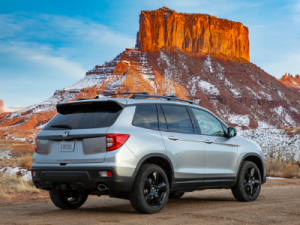
The Honda Passport is one of the widest and easiest to load cars we’ve seen this year. Because it’s so wide, we were able to slide it completely flat without any trouble near the wheel wells. There is a small gap behind the seats, but we didn’t have any issue loading. The interior spacing is similar to that of the Pilot, though it’s slightly shorter and doesn’t have a third row of seating. The Passport also has one of our favorite features, levers in the trunk that easily lower the back seats. It is important to note, however, that the Passport sits relatively high. The McFactor is identical to that of the Pilot, one of the nicer ones we’ve seen so far.
Overall: This car is very similar to the Pilot: it’s large, high, and really nice. While the cargo bed is slightly shorter than that of the Pilot, it’s still incredibly easy to load.
Land Rover Discovery Sport

Loading the harp into Discovery Sport is a bit difficult as the back seats are higher than the trunk. As such, the driver’s seat feels high but the trunk does not. Similarly, the top of the harp hangs over the end of the seats. The car does have levers to easily flip the back seats as well as a third-row seating option. The car has a relatively average McFactor, with four cup holders. Pulling a sliding shelf over the cup holders also provides a bit of a shelf in the center console.
Overall: This car is a bit difficult to load as the bed is uneven and the harp hangs over the ends of the seats. Its McFactor is average. Still, it has a few interesting features.
Lincoln Nautilus
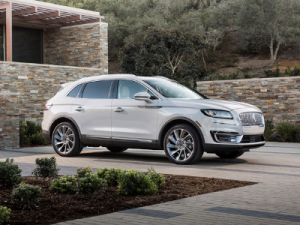
The Nautilus name is new for 2019, but it is more of a rebranding of Lincoln’s MKX model rather than a completely new vehicle. The luxury crossover is nice and wide for harp loading. It lacks a bit in length, with the crown of the harp hanging over the edge of the cargo bed by several inches. Cargo area seat release buttons make set up easy for harp loading. The Nautilus hits the mark with its numerous cubbies and storage shelf under the center console.
Overall: The Nautilus is a solid harpmobile, but for the price tag you might be disappointed at the slightly-too-short cargo bed.
Volkswagen Tiguan

When we told our friendly Volkswagen salesman that the Tiguan barely missed the cut in our 2014 harpmobile review because it was too small, he told us we might want to take another look. The Tiguan’s 2018 redesign added 11 inches of cargo space, putting it firmly in harp hauling territory. We couldn’t put the driver’s seat all of the way back, but there was still plenty of room for an average size female driver. Taller drivers might feel a little cramped with the harp in the Tiguan. While the Tiguan is big enough for the harp, it requires a little maneuvering to slide it in. The Tiguan comes with an optional third row of seating. We tested the model without the third row seating, but there would be a small gap in the cargo bed to contend with if you go with the three-row option. This gap hasn’t proved to be a big obstacle with other three-row harpmobiles we’ve tested, just something to consider. We loved the cargo area seat releases, which provided a fairly flat loading zone. Up front, the Tiguan felt similar to its big sibling, the Atlas—adequate storage, but nothing to bring it close to minivan levels.
Overall: The upsized Tiguan is a viable contender to other small crossover harpmobile favorites like the Honda CR-V, Toyota RAV4, and Nissan Rogue, but lacks the wow factor to put it ahead of these perennial harp hauling favorites.
Volvo XC90
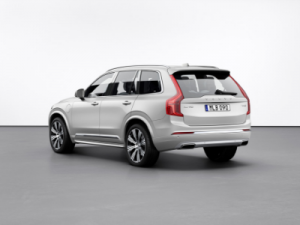
The Volvo XC90 has plenty of space to hold both your harp and your gear. We didn’t have any issues flat loading the harp, despite a gap behind the second-row seats. The car sits a little high, unlike Volvo’s V90 station wagon. The XC90’s McFactor is very similar to that of the V90, relatively average with four cup holders.
Overall: This car is spacious and easy to load, though a little high. Its McFactor is average.
MINIVANS
Chrysler Pacifica/Pacifica Hybrid
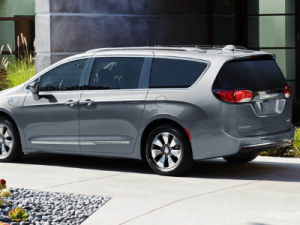
The Chrysler Pacifica is the only minivan in our harpmobile review this year. But wait, what happened to the Chrysler Town and Country? We were confused too. Here’s the deal: Chrysler phased out its Town and Country minivan in 2016 and replaced it with the Pacifica minivan in 2017. The Pacifica was the name of Chrysler’s amorphous wagon/crossover/SUV model that was in production from 2004-2008, but in 2018 Chrysler rebooted the Pacifica name into its premier minivan. To add to the confusion, in 2020, Chrysler will spin off its lowest two trim level models of the Pacifica minivan and call it the Chrysler Voyager minivan. If your head is spinning, we’ll try to keep the rest of the review simple.
First, let’s talk about the differences between the hybrid and non-hybrid models. The most obvious difference is fuel economy. The hybrid gets an impressive 32 MPG combined electric and gas, it can go 33 miles on electric alone, and it gets a whopping 84 MPG on electric only. The nonhybrid gets 22 combined MPG. You’ll have to decide whether the difference in fuel efficiency is worth the difference in price. The second difference in price—the hybrid is about $12,000 more expensive, which can be hard to swallow, even when you take into consideration the fuel cost savings and possible tax incentives with the hybrid. The third big difference between the two is the seating options. The batteries for the hybrid model are stored under the second-row seats, so you lose the stow-and-go option for the second row seats. You also don’t have the option for the middle jump seat, limiting the passenger capacity to six in the hybrid.
Pretty much everything else is the same, for purposes of our review. You can column load and flat load in the Pacifica. There is a slight slope between the second and third rows, which could make column loading a little difficult unless you have some hard plastic or pillow to aid the load in. The clearance was tight in the back hatch—when we pulled the harp out on its column, the knee block barely cleared the ceiling. The Pacifica has all of the creature comforts that harpists want to see—lots of cup holders, tons of storage, a tray to hold your lunch. Everywhere you look there’s another button that unlocks some new function.
Overall: If your two harpmobile criteria are minivan and hybrid, then your search stops here. The Pacifica offers all the space and comforts harpists would expect from a minivan. We think it will quickly become a favorite among harpists.
SUVS
Chevy Blazer
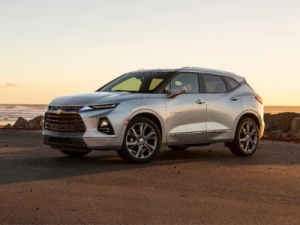
The Chevy Blazer has been around for a long time, serving many harpists well over the years, including several of us at Harp Column. The Blazer hasn’t been made since 2005, but Chevy revived the model in 2019, and we were excited to take a look at how this classic SUV would be updated. While outdoor adventurists might be disappointed that the Blazer lacks some of the ruggedness that it was known for in its previous iteration, harpists will be happy to know that the SUV’s creature comforts have seen a major upgrade. The Blazer’s cargo area becomes totally flat once you engage the cargo area seat releases that fold down the second-row seats. The harp easily slides in flat, with no maneuvering necessary. Even though it’s an SUV, the Blazer’s cargo bed doesn’t sit too high off the ground—good for harp loading. Because it doesn’t sit too high, it’s also a more comfortable car to get in and out of than some SUVs. The armrest in the center console can double as a ledge to hold your sandwich. While there isn’t abundant storage, you definitely won’t feel cramped in the front seat. There is no third row seating available in the Blazer, but you can tip the harp up and rest the knee block on the second-row seat behind the passenger’s seat to squeeze in two passengers plus the harp.
Overall: Easy, spacious harp loading, but doesn’t feel like a giant, truck-like SUV. The rebooted Blazer will give other two-row SUV harpmobile favorites like the Nissan Murano and Hyundai Santa Fe a run for their money.
Honda Pilot

The Honda Pilot was one of our favorite harpmobiles in our 2006 review, so we were excited to see how Honda redesigned this SUV in 2016. The Pilot sits a little high as a traditional SUV. While it doesn’t allow for column loading, it is spacious enough to load flat without having to turn it or maneuver it between the wheel wells. There is, however, a small gap between the second and third rows, which could make loading a little difficult without a pillow or piece of plastic to bridge the gap. The Pilot’s McFactor stands out above the competition, with a ton of leg room, four cup holders, and center console storage that doubles as a shelf.
Overall: This is a large, high vehicle with lots of space for the harp and an incredible McFactor.
Hyundai Palisade

New for 2020, Hyundai has come out with the Palisade—a new three-row SUV to replace its Santa Fe XL model. The Palisade is a spacious vehicle for harp lovers. It’s large enough that the harp slides in flat relatively easily, despite a small gap behind the seats. The harp doesn’t hang over the seats at all, and there are several inches of space behind the harp. The Palisade’s McFactor is strong, with four cup holders and lots of storage space, including a shelf under the center console. As a note, the Kia Telluride (also new for 2020) is very similar to the Hyundai Palisade, according to the dealer we spoke to. Unfortunately, there were not any models available at the dealership, so we were unable to test it, but the Telluride is certainly another three-row harpmobile to consider.
Overall: This long, spacious, three-row SUV has a McFactor to match its size, and a near twin in the Kia Telluride.
Jeep Cherokee

The Jeep Cherokee has been around for a long time and is a favorite among off-road enthusiasts. For harp enthusiasts, though, this compact SUV comes up short. The harp couldn’t be a tighter fit in the back of the Cherokee. We moved both the driver’s and the passenger’s seat as far forward as they would go, and we still barely squeezed in the harp. The narrow wheel wells made it difficult to slide in the harp, and the slight incline of the back seats presented a challenge in pushing in the harp all the way. We had one of our toughest harp-loading challenges with this vehicle. Up front, the Cherokee’s front seats are cramped with the harp loaded. We could get in, but it wouldn’t be comfortable for regular harp hauling. The McFactor was average—four cup holders and a nice little cubby for your tuning key were par for the course.
Overall: Trying to load the harp into the Jeep Cherokee felt a little bit like trying to squeeze into tight pants—it takes a lot of maneuvering, there’s an obstacle at every turn, and the end result isn’t very comfortable.
Jeep Grand Cherokee

It’s probably best to read this review in comparison to the Grand Cherokee’s smaller sibling, the Cherokee. In terms of harpability, the Grand Cherokee lives up to the superlative in its name. The Grand Cherokee is wide enough to slide in the harp flat without a struggle. The front seats can be all the way back and still allow enough room for the harp. While the back seats don’t fold completely flat, they do lay much flatter than the Cherokee, and the slight incline didn’t bother us. The one thing we didn’t like about loading in the Grand Cherokee is the cargo bed height. At 33 inches, it felt a little high off the ground for our liking. Maybe it was the freshly baked cookie smell wafting over the sales floor while we were testing the Grand Cherokee (clearly a great sales technique), but we rather liked the feel of the SUV up front. It sits a little high—you almost have to hoist yourself into the driver’s seat, but the front seat is roomy. There are plenty of cup holders and a few cubbies. There’s a control for off-road driving options in the center console, which is great for outdoor enthusiasts, but we would have rather seen a tray for our lunch.
Overall: Good harp fit for a mid-size SUV if you don’t mind sitting a little high off the ground.
Lincoln MKT
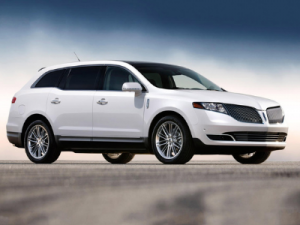
When we asked harpists on social media about the harpmobiles they were interested in seeing us review, we got a few requests to review a hearse. While we are pretty sure those requests were tongue in cheek, there is definitely some appeal to a long, flat cargo bed that harpists just can’t resist. So when we walked into the Lincoln showroom and saw a long, black, boxy MKT, the words “harp hearse” did come to mind. Fact is that the MKT model is a little stale and outdated, reminding many of a hearse, which is probably one reason Lincoln is phasing it out of its lineup. For harpists, though, there’s a lot to like in the MKT. The cargo bed goes on for days, and all of the seats have electronic controls to fold flat. The cargo bed isn’t too high off the ground, and it was just wide enough to slide in the harp. The MKT offers two second-row seating options—either dual captain’s chairs or a three-person bench. Lincoln is known for its standard luxury features, and there is some bonus storage under the center console, pushing up its McFactor.
Overall: Length is the MKT’s strength. It might not be the hippest harpmobile on the block, but it offers tons of room and standard luxuries not found in other harpmobiles.
Lincoln Aviator

If you are wondering how the Lincoln Aviator made it into our review despite it’s MSRP north of $50,000, the answer is very persuasive salesmen. After looking at Lincoln’s MKT and Nautilus, we were ready to roll our harp out of the dealership and head to our next stop, but before we knew it we had a crowd of four salesmen and several customers asking for a harp demo. They insisted we look at the brand new Aviator, which just came in the week before. It is Lincoln’s new luxury SUV model for 2020. In fact, we were among the first customers to check it out. We were wowed as the Aviator slowly lowered close to the ground as we approached the driver’s seat, then imperceptibly raised back up once we were in and ready to drive. The adjustable height is definitely a plus for harp loading. The Aviator offers a choice of second-row dual captain’s chairs or a three-person bench seat. We tested the model with captain’s chairs. Everything folds flat for easy harp loading. There is more than enough space for your harp and gear in the roomy cargo area. Up front, you feel a little bit like you’re riding in a spaceship with all of the high-tech features, including an inductive phone charger and impressive 28-speaker system. Honestly, the list of cool features on this harpmobile goes on and on, but what really won our hearts was the thoughtful driver alert sounds that were crafted and recorded by members of the Detroit Symphony Orchestra. We’re sold!
Overall: With a price tag above $50K, the Aviator will be out of most harpists’ price range, but for those who want to ride to their gig in luxury, the Aviator fits the bill.
Subaru Ascent
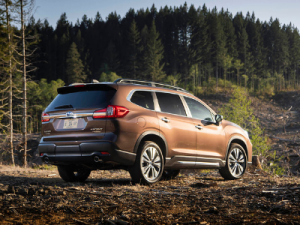
The Subaru Ascent is new on the market in 2019. At first glance, this three-row SUV reminded us a little bit of its cousins the Outback and the Forrester, in its wagon-like body style. But the Ascent is unmistakably SUV-like when you load a harp in it. The cargo area is very roomy—we easily slid the harp in flat. While the seats fold flat, there is a small gap between the second and third rows that you have to navigate, presenting a little bit of a problem when loading the harp in, but nothing that can’t be overcome with a well placed pillow or piece of hard plastic on the cargo bed. The Ascent felt more like a crossover or wagon than an SUV in the driver’s seat. With plenty of cup holders (a mind-boggling 19 in all) and a nice-size arm rest than can double as a tray, the McFactor was slightly better than average.
Overall: If you are a fan of the look and feel of Subarus and want the versatility of third-row seating, then the Ascent should be on your short list.
Volkswagen Atlas
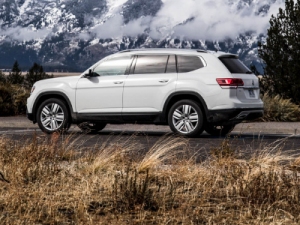
This is just the second model year for the Volkswagen Atlas. The Atlas joins the Subaru Ascent as another mid-size SUV with third row seating. While it’s classified as a mid-size SUV, we thought it felt more like an SUV than crossover or wagon. Seating and harp loading configurations abound in the Atlas. It offers either bench seating or captain’s chairs in the second row. If you opt for captains chairs, you can fit a passenger in the second row with the harp loaded. A second-row passenger plus harp isn’t possible with the bench seating option, because the bench seat split puts the smaller seat behind the driver’s seat. We tested a model with the captain’s chairs. Though there is a gap between the two captain’s chairs, it didn’t affect harp loading at all. The harp slides in with the slightest maneuvering required to get through the wheel wells. The Atlas has plenty of length to accommodate the harp. The European styling that Volkswagen is known for is apparent in the front seat. It offers adequate room for a drink and a cubby to stash your pocket change, but doesn’t go much beyond the basics.
Overall: Plenty of room for the harp and numerous seating configurations make the Volkswagen Atlas an appealing option, especially if Euro styling is your thing.
WAGONS
Buick Regal TourX
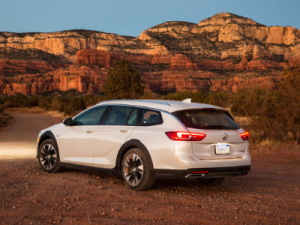
The Buick Regal TourX is a luxury vehicle at a bargain price. As a station wagon, it sits relatively low to the ground and runs a bit narrow. The Regal TourX seems bigger than other wagons without feeling gigantic. As a note, we think it compares to the Buick Roadmaster. It also has some nice features that may not come standard on other cars, such as levers that put the seats down easily and all-wheel drive. Its McFactor is a little nicer than average, though it only has three cup holders.
Overall: This is a really nice station wagon: despite being narrow it feels spacious and it does have some nice features that set it apart. It has a nice McFactor, though it only has three cup holders.
Volkswagen Golf AllTrack/SportWagen
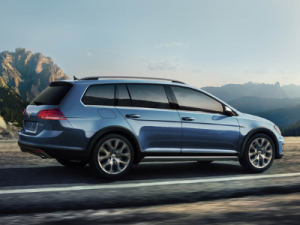
We have to be honest, we’ve got a soft spot for station wagons, and Volkswagen’s commitment to its wagon offerings despite a declining market for them wins them points in our book. Word is that Volkswagen is discontinuing production of these two wagons after 2019, but we are hoping another wagon model will take their place. We tested the Golf Alltrack, but since it shares the same interior cargo space and front seat set-up, for purposes of this review, we combined them. Though they are similar in terms of harp loading, there are a few differences we should point out. First, the Alltrack has a higher ground clearance than the Sportwagen. This is Volkswagen’s attempt to make the wagon feel more SUV-like. It certainly feels more like the Subaru Outback in the front seat than it does, say the Volvo V90 wagon. There is a significant difference in both price point and fuel mileage between the two models, and also some differences under the hood that you’ll want to investigate further if either model strikes your fancy. We loved the high tail gate and the cargo area seat releases. Unfortunately, the cargo area is fairly narrow, making harp loading quite a challenge. The driver’s seat had to be moved so far forward that it was an uncomfortable fit for us in the driver’s seat. The Alltrack doesn’t have too much to offer in terms of storage space beyond a phone storage cubby and a couple of cup holders.
Overall: As much as we love a good station wagon, the narrow cargo area and the tight fit for the driver makes the Volkswagen Golf Alltrack a wagon we just can’t fall head over heels for. If you are shorter or have a smaller harp, though, the Alltrack just might make you swoon.
Volvo V90
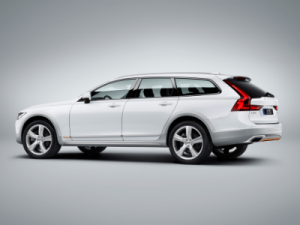
Volvo station wagons have long been a favorite among harp movers. Volvo’s latest wagon model, the V90, isn’t your mother’s old, boxy Volvo wagon. The V90 looks sleek on the outside, and features handy upgrades such as levers at the back hatch that lower the seats easily and a foot sensor to open the trunk while keeping two hands on the harp. While the cargo space first appears narrow, the harp fit wasn’t too difficult, and it definitely was not as tight as the Volvo’s previous wagon, the V60 (reviewed in 2014). The V90 is, however, very low to the ground—in fact, it was the lowest harpmobile we tested. Its McFactor is average, with four cup holders but not much storage.
Overall: Classic station wagon that will make you nostalgic for the Volvo wagons of your childhood, yet offers modern upgrades, a good harp fit, and an average McFactor. •






